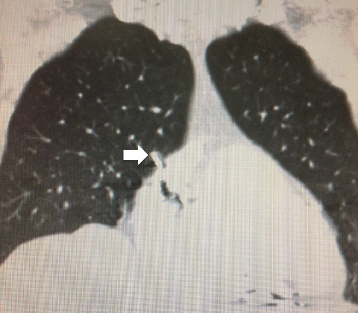Troubleshooting during a challenging high-risk pacemaker lead extraction: a case report and review of the literature
- PMID: 25890018
- PMCID: PMC4404126
- DOI: 10.1186/s13104-015-1034-y
Troubleshooting during a challenging high-risk pacemaker lead extraction: a case report and review of the literature
Abstract
Background: The use of cardiac implantable electrical devices continues to increase with the validation of new beneficial indications. While the risks of device implantation decreased significantly over time, significant risk remains associated with their extraction when indicated. A high-risk pacemaker lead extraction case is described, wherein a chronically implanted lead that had perforated the right atrium was successfully removed without the need for cardiopulmonary bypass. In this report we share our approach to this challenging extraction case and describe an infrequently utilized off-pump hybrid technique that we term the "lead-inverting stitch".
Case presentation: A 74 year-old Caucasian woman with complete heart block and remote pacemaker implantation presents with a swollen and erythematous infected pacemaker pocket necessitating device extraction. Chest computerized tomographic imaging revealed a chronically perforating right atrial lead tip approximately 2 cm within the pericardial space. A successful hybrid transvenous and open surgical extraction approach was undertaken without the need for cardiopulmonary bypass; this was made possible due to a successfully positioned "lead-inverting stitch".
Conclusion: Implantable cardiac electrical device infections are amongst the most dreaded post implant complications. Risks of device extraction are further complicated in cases of chronic lead perforations. Extraction strategies that avoid cardiopulmonary bypass initiation are preferred.
Figures



Similar articles
-
Predictors of 30-day and 1-year mortality after transvenous lead extraction: a single-centre experience.Europace. 2014 Aug;16(8):1218-25. doi: 10.1093/europace/eut410. Epub 2014 Feb 25. Europace. 2014. PMID: 24569572
-
Extraction of cardiac rhythm devices: indications, techniques and outcomes for the removal of pacemaker and defibrillator leads.Int J Clin Pract. 2010 Jul;64(8):1140-7. doi: 10.1111/j.1742-1241.2010.02338.x. Int J Clin Pract. 2010. PMID: 20642712 Review.
-
Less-invasive surgical extraction of problematic or infected permanent transvenous pacemaker system.Ann Thorac Surg. 2005 Apr;79(4):1250-4. doi: 10.1016/j.athoracsur.2004.08.055. Ann Thorac Surg. 2005. PMID: 15797058
-
Comparison of standard and modified transvenous techniques for complex pacemaker lead extractions in the context of cardiac implantable electronic device-related infections: a 10-year experience.Europace. 2013 Nov;15(11):1629-35. doi: 10.1093/europace/eut077. Epub 2013 Jul 25. Europace. 2013. PMID: 23887094
-
Pacing and implantable cardioverter-defibrillator transvenous lead extraction.Ital Heart J. 2005 Mar;6(3):261-6. Ital Heart J. 2005. PMID: 15875518 Review.
Cited by
-
Trans-innominate vein extraction of stuck pacemaker leads.Indian J Thorac Cardiovasc Surg. 2019 Jan;35(1):78-80. doi: 10.1007/s12055-018-0690-7. Epub 2018 Aug 9. Indian J Thorac Cardiovasc Surg. 2019. PMID: 33060977 Free PMC article.
-
Management of Cardiac Electronic Device Infections: Challenges and Outcomes.Arrhythm Electrophysiol Rev. 2016;5(3):183-187. doi: 10.15420/aer.2016:21:2. Arrhythm Electrophysiol Rev. 2016. PMID: 28116083 Free PMC article.
References
-
- Brunner MP, Cronin EM, Duarte VE, Tarakji KG, Martin DO, Callahan T, et al. Clinical predictors of adverse patient outcomes in an experience of more than 5000 chronic endovascular pacemaker and defibrillator lead extractions. Heart Rhythm. 2014;11(5):799–805. doi: 10.1016/j.hrthm.2014.01.016. - DOI - PubMed
Publication types
MeSH terms
LinkOut - more resources
Full Text Sources
Other Literature Sources
Medical

